Topics
Category
Era
Great Hinckley Fire, 1894
On September 3, 1894, a headline of the Minneapolis Tribune screamed, “A Cyclone of Wind and Fire: Northern Minnesota and Wisconsin Bathed in a Sea of Flame and Hundreds of Human Lives are Sacrificed to the Insatiable Greed of the Red Demon as He Stalks through the Pine Forest on His Mission of Death.” In just four hours on September 1, the red demon destroyed an estimated 480 square miles, resulting in massive destruction and over 418 deaths. The fire zone lay within Pine County, which was named for its majestic white pine forests.
In 1894, Hinckley was a booming lumber town that lay halfway between St. Paul and Duluth. With a population of about 1500 during the logging season, it had many shops and homes, an opera house, and a new brick school. The Eastern Minnesota and St. Paul and Duluth railroads ran through Hinckley. Although it was named the Hinckley fire, the fire zone extended from Quamba, Brook Park (Pokegama) and Mission Creek to the south of Hinckley and north to Sandstone, Groningen (Miller), Askov (Partridge), and Finlayson.
A fire survivor described Hinckley as occupying “a hole cut in the brush lands and for miles in all directions young trees, huge stumps, and fallen logs covered the land.” This was the “slash” that remained after the land was logged; it was an excellent fire fuel in the dry, hot summer. Fires, often caused by sparks from passing trains, burned in the area all summer long, and residents complained about sore eyes due to the constant smoky air. Until September 1, the fires had been suppressed.
The Hinckley fire began as two separate fires—one south of Mission Creek and the other south of Brook Park. No lives were lost in Mission Creek, but all buildings burned except a log cabin. Seventy-three people survived by taking refuge in a potato field while enduring ash and intense heat. Twenty-three people in Brook Park died when the fire roared through at 2 p.m. The entire town was lost, including the new schoolhouse. Survivors said that the fire made a rumbling sound as it reached the town with its superheated air and wind-driven fire balls.
The fires merged together south of Hinckley, and witnesses described it as a tornado of fire or firestorm. The volunteer fire department deployed its new steam fire engine but abandoned the fight when the fire overcame them and burned through the hose. Some residents had left town on the noon train; many others started packing their belongings to escape either by the afternoon trains or by wagon. By 3:30 p.m., people began a desperate run to save their lives. One hundred people reached the shallow water of a gravel pit and survived by submerging themselves while enduring intense heat and fire. Another hundred died of suffocation in a swamp. Many suffocated while taking refuge in root cellars and wells or died when the fire overcame them.
Eighty Sandstone citizens died in the fire, and many survivors took refuge in the cold Kettle River. At least twenty-three Ojibwe people died in their hunting camp on the eastern shore of Mille Lacs. The fire had melted their rifles and shotguns.
At about 4:00 p.m., evacuation by train began. The Eastern Minnesota train left Hinckley with about four hundred fire refugees added to its existing passengers. Witnesses reported people on fire running after it as it left. Near Sandstone, the train crossed the burning bridge over the Kettle River just minutes before it collapsed. The St. Paul and Duluth Railway train left Hinckley with over 300 refugees. Hit by an explosion, the train caught on fire but managed to reach Skunk Lake where the people took refuge in the water. The trains’ engineers (James Root, William Best, and Edward Barry) and crews were honored as heroes.
Many survivors had severe burns, and some died of their injuries. Many had eyes swollen shut and were unable to see. Heavy wool clothing saved one young woman, since it did not burn as easily as cotton.
Many communities provided immediate relief and shelter for the survivors, including Pine City, Mora, Duluth, and Superior. On September 3, a state fire relief commission was appointed to manage the recovery. Contributions were received from around the world, including 500 pairs of shoes from the Montgomery Ward Company.
Bibliography
“A Cyclone of Wind and Fire!” Minneapolis Tribune, September 3, 1894.
P2698, Box 2
Betty Moore and family papers, 1848–1973 (bulk 1920–1950s)
Manuscript Collection, Minnesota Historical Society, St. Paul
http://www2.mnhs.org/library/findaids/01196.xml
Bly, Nellie. “Path of the Big Fire: Nellie Bly Explores the Blackened Waste that Marks its Course.” The World, September 8, 1894.
Brown, Daniel James. Under a Flaming Sky: The Great Hinckley Firestorm of 1894. Guilford, CT: Lyons Press, 2016.
“The Burnt District.” St. Cloud Daily Times, September 17, 1894.
City of Hinckley. History.
https://hinckleymn.gov/contact_us/history/index.php
P1193-2
“Death at My Heels” (unpublished typescript by May Gorman Newman, 1953)
Manuscripts Collection, Minnesota Historical Society, St. Paul
Description: A reminiscent account of the experiences of a sixteen-year-old Hinckley, Minnesota, girl in the 1894 Hinckley fire. Newman describes the first alarm to the city, attempts to flee by train, and the arrival of survivors in Duluth.
First Annual Report of the Chief Fire Warden of Minnesota for the Year 1895. St. Paul: Pioneer Press Company, 1896.
https://books.google.com/books?id=-B4WAAAAYAAJ&pg=PA1&lpg=PA1&dq=First+Annual+Report+of+the+Chief+Fire+Warden+of+Minnesota+for+the+Year+1895
Foster, Earl J., and Amy Troolin. Images of America: Northern Pine County. Charleston, SC: Arcadia Publishing, 2011.
Haines, Donald A., and Rodney W. Sando. Climatic Conditions Preceding Historically Great Fires in the North Central Region. Research Paper NC-34. St. Paul: US Department of Agriculture, Forest Service, North Central Forest Experiment Station, 1969.
https://research.fs.usda.gov/treesearch/10555
Hinckley Fire Museum.
http://hinckleyfiremuseum.com
Hinckley Fire Museum display, Hinckley, Minnesota, July 2019.
P1788
John W. Blair papers, 1867-1915
Manuscripts Collection, Minnesota Historical Society, St. Paul
Description: Papers collected by an African American St. Paul and Duluth Railway Company porter, mostly concerning his heroic rescue of train passengers and townspeople during the 1894 forest fire in Hinckley, Minnesota.
“May Reach 500.” Duluth News Tribune, September 5, 1894.
Minnesota Legislature, Office of the Revisor of Statutes, Minnesota Session Laws—1895, Regular Session. Chapter 196, An Act to Provide for the Preservation of Forests of this State and for the Preservation and Suppression of Forest and Prairie Fires.
https://www.revisor.mn.gov/laws/1895/0/General+Laws/Chapter/196/pdf
115.K.16.1B
Minnesota State Commission for the Relief of Fire Sufferers records, 1894–1895
State Archives Collection, Minnesota Historical Society, St. Paul
Description: Records of a commission created to provide relief for victims of the Hinckley fire, and of fires near New York Mills and Milaca, and in Carlton, Cass, Itasca, Kanabec, and Todd counties. Documents include account ledgers of donated goods, applications for relief for fire victims, vouchers and receipts, correspondence.
http://www2.mnhs.org/library/findaids/gr01044.xml
SD421 .M63
Report of the Minnesota State Commission for the Relief of Fire Sufferers. St. Paul: Pioneer Press Company, 1895.
Swenson, Grace Stageberg. From the Ashes: The Story of the Hinckley Fire of 1894. St. Cloud: North Star Press of St. Cloud, Inc., 1994.
SD421.W6
Wilkinson, William, Reverend. Memorials of the Minnesota Forest Fires in the Year 1894 with a Chapter on the Forest Fires in Wisconsin in the Same Year. Minneapolis: Norman E. Wilkinson, 1895.
Nobisso, Josephine. John Blair and the Great Hinckley Fire. Boston: Houghton Mifflin Company, 2000.
Related Images
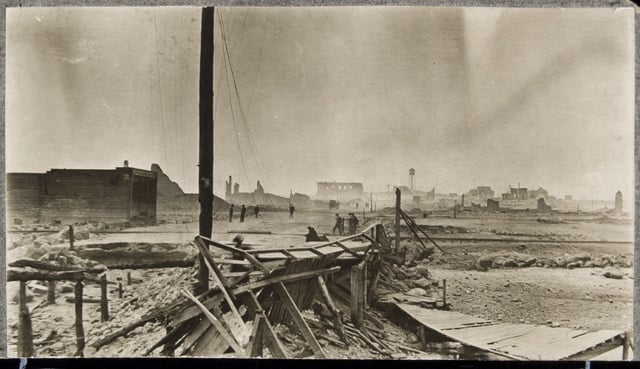
Main Street in Hinckley
Holding Location
Articles
More Information
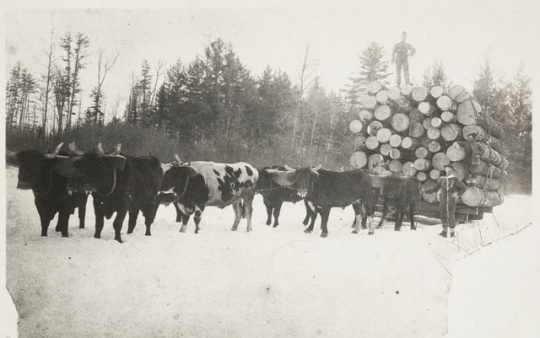
Oxen pulling logs near Hinckley
Holding Location
Articles
More Information
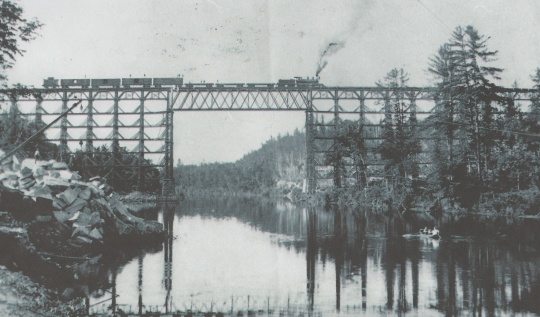
Bridge over the Kettle River
Public domain
Holding Location
Articles
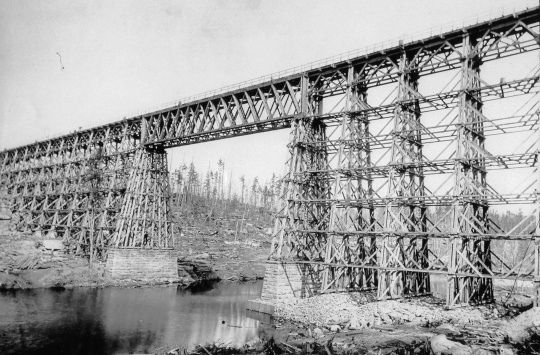
Bridge over the Kettle River
Public domain
Holding Location
Articles
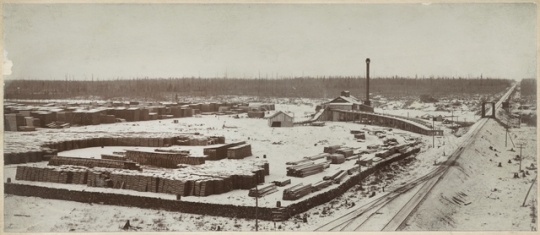
Brennan lumber mill
Holding Location
Articles
More Information
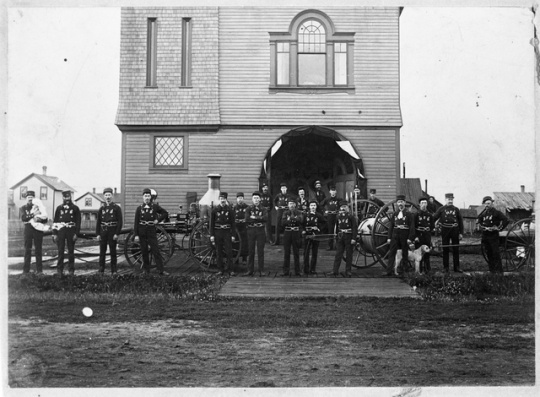
Hinckley fire house
Articles
More Information
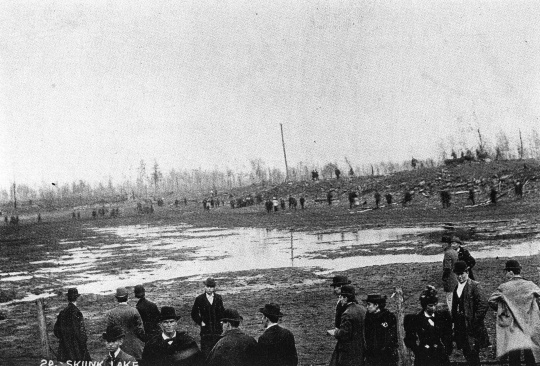
Skunk Lake after the Hinckley Fire
Public domain
Articles
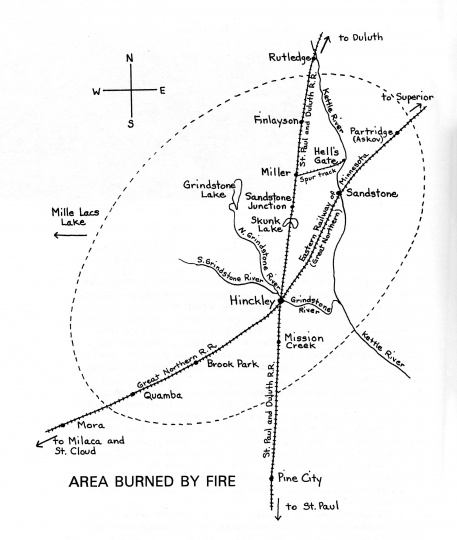
Area burned in the Hinckley Fire
Articles
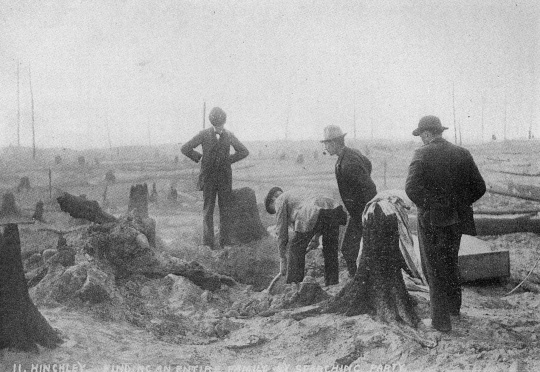
Search party finding human remains
Holding Location
Articles
More Information
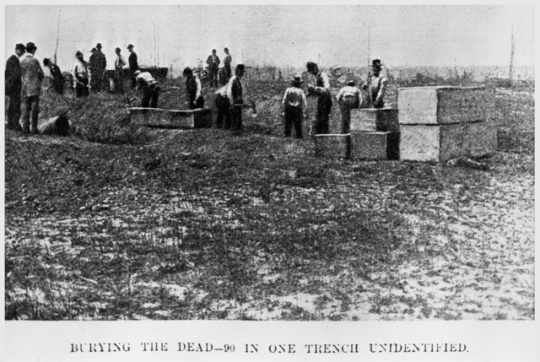
Burying Hinckley fire victims
Holding Location
Articles
More Information
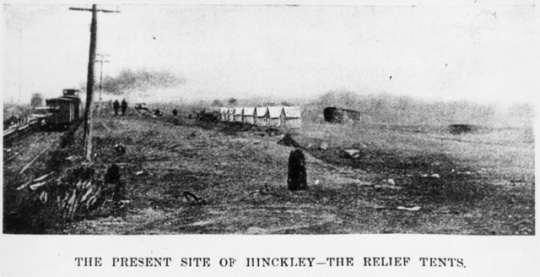
Tents for victims of the Hinckley fire
Holding Location
Articles
More Information
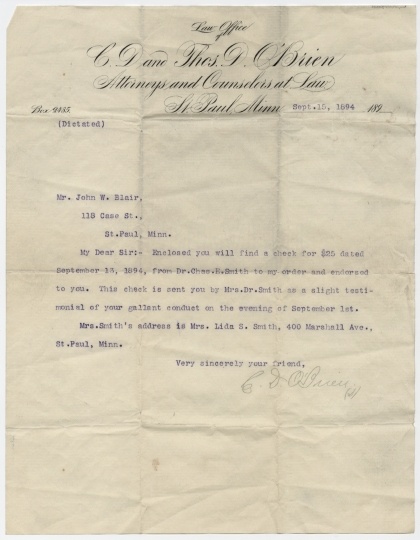
Letter to John Blair in recognition of his actions on September 1, 1894
Holding Location
Articles
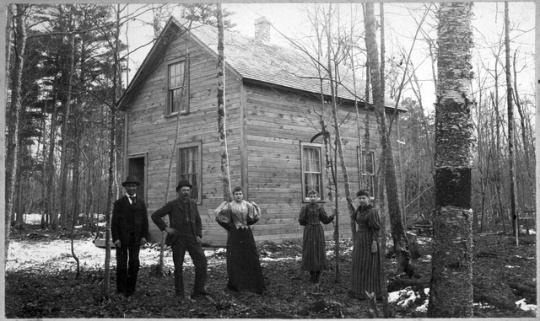
House for victims of the Hinckley fire
Holding Location
Articles
More Information
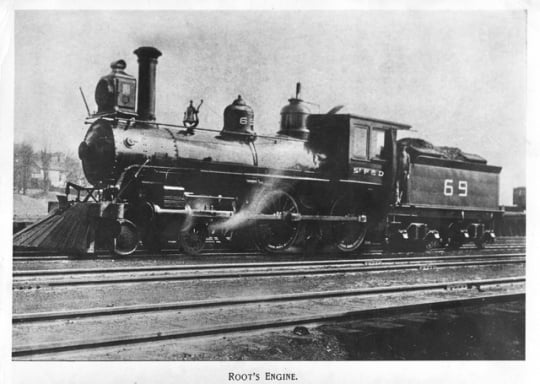
Root’s engine
Holding Location
Articles
More Information
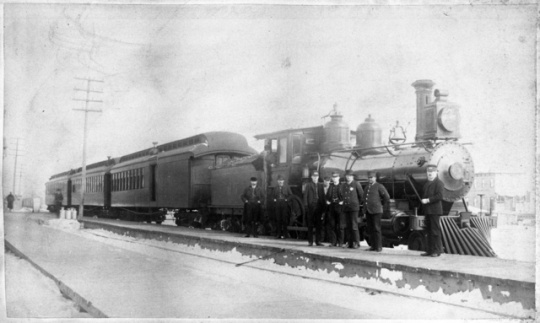
St. Paul and Duluth Railroad Company train
Holding Location
Articles
More Information
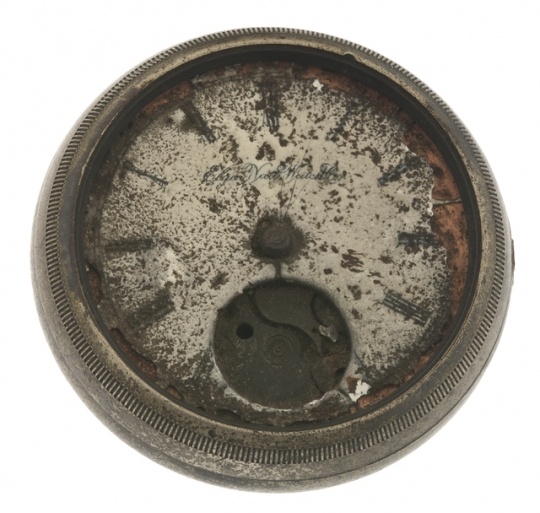
Watch belonging to a victim of the Hinckley fire
All rights reserved
Holding Location
Articles
More Information
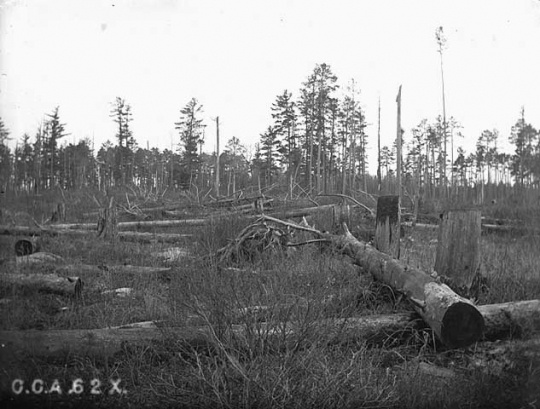
Slash after government logging
Holding Location
Articles
More Information
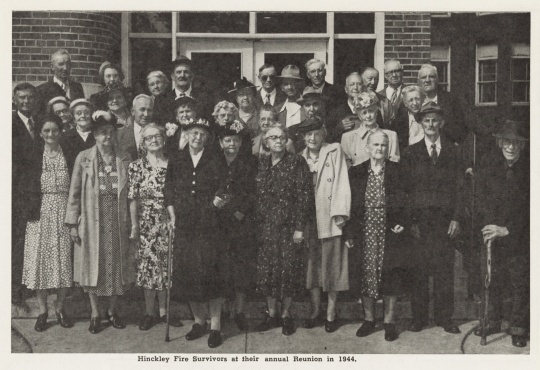
Hinckley Fire survivors’ fiftieth reunion
Holding Location
Articles
More Information
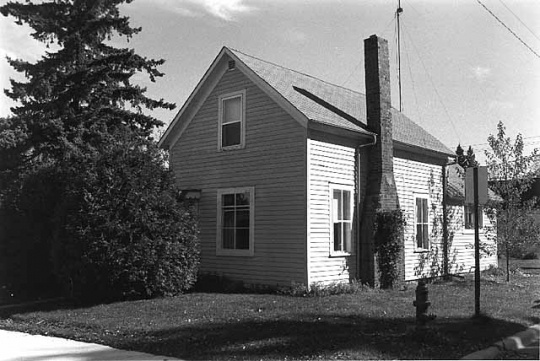
House in Sandstone built for victims of the Hinckley fire
Holding Location
Articles
More Information
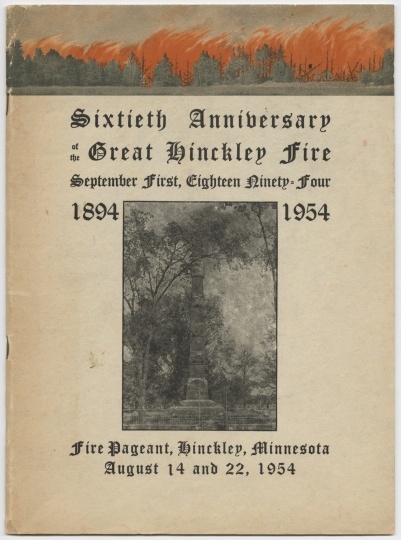
Program for Hinckley Fire survivors’ sixtieth reunion
Holding Location
Articles
More Information
Related Articles
Turning Point
On September 1, 1900, a fire monument is dedicated at the burial site of 248 fire victims. Many of the victims in the four trenches were unidentified. The official mortality figure of 418 does not include the many trappers, loggers, and hunters, including Ojibwe people, who lived and died in the surrounding woods, or the bodies found in the later months and even years.
Chronology
August 31, 1894
September 1
September 1
September 2, early a.m.
September 2
September 3
September 3
September 3
September 5
September 5
September 8
September 16
November 24
December 19, 1894
April 18, 1895
1895
Bibliography
“A Cyclone of Wind and Fire!” Minneapolis Tribune, September 3, 1894.
P2698, Box 2
Betty Moore and family papers, 1848–1973 (bulk 1920–1950s)
Manuscript Collection, Minnesota Historical Society, St. Paul
http://www2.mnhs.org/library/findaids/01196.xml
Bly, Nellie. “Path of the Big Fire: Nellie Bly Explores the Blackened Waste that Marks its Course.” The World, September 8, 1894.
Brown, Daniel James. Under a Flaming Sky: The Great Hinckley Firestorm of 1894. Guilford, CT: Lyons Press, 2016.
“The Burnt District.” St. Cloud Daily Times, September 17, 1894.
City of Hinckley. History.
https://hinckleymn.gov/contact_us/history/index.php
P1193-2
“Death at My Heels” (unpublished typescript by May Gorman Newman, 1953)
Manuscripts Collection, Minnesota Historical Society, St. Paul
Description: A reminiscent account of the experiences of a sixteen-year-old Hinckley, Minnesota, girl in the 1894 Hinckley fire. Newman describes the first alarm to the city, attempts to flee by train, and the arrival of survivors in Duluth.
First Annual Report of the Chief Fire Warden of Minnesota for the Year 1895. St. Paul: Pioneer Press Company, 1896.
https://books.google.com/books?id=-B4WAAAAYAAJ&pg=PA1&lpg=PA1&dq=First+Annual+Report+of+the+Chief+Fire+Warden+of+Minnesota+for+the+Year+1895
Foster, Earl J., and Amy Troolin. Images of America: Northern Pine County. Charleston, SC: Arcadia Publishing, 2011.
Haines, Donald A., and Rodney W. Sando. Climatic Conditions Preceding Historically Great Fires in the North Central Region. Research Paper NC-34. St. Paul: US Department of Agriculture, Forest Service, North Central Forest Experiment Station, 1969.
https://research.fs.usda.gov/treesearch/10555
Hinckley Fire Museum.
http://hinckleyfiremuseum.com
Hinckley Fire Museum display, Hinckley, Minnesota, July 2019.
P1788
John W. Blair papers, 1867-1915
Manuscripts Collection, Minnesota Historical Society, St. Paul
Description: Papers collected by an African American St. Paul and Duluth Railway Company porter, mostly concerning his heroic rescue of train passengers and townspeople during the 1894 forest fire in Hinckley, Minnesota.
“May Reach 500.” Duluth News Tribune, September 5, 1894.
Minnesota Legislature, Office of the Revisor of Statutes, Minnesota Session Laws—1895, Regular Session. Chapter 196, An Act to Provide for the Preservation of Forests of this State and for the Preservation and Suppression of Forest and Prairie Fires.
https://www.revisor.mn.gov/laws/1895/0/General+Laws/Chapter/196/pdf
115.K.16.1B
Minnesota State Commission for the Relief of Fire Sufferers records, 1894–1895
State Archives Collection, Minnesota Historical Society, St. Paul
Description: Records of a commission created to provide relief for victims of the Hinckley fire, and of fires near New York Mills and Milaca, and in Carlton, Cass, Itasca, Kanabec, and Todd counties. Documents include account ledgers of donated goods, applications for relief for fire victims, vouchers and receipts, correspondence.
http://www2.mnhs.org/library/findaids/gr01044.xml
SD421 .M63
Report of the Minnesota State Commission for the Relief of Fire Sufferers. St. Paul: Pioneer Press Company, 1895.
Swenson, Grace Stageberg. From the Ashes: The Story of the Hinckley Fire of 1894. St. Cloud: North Star Press of St. Cloud, Inc., 1994.
SD421.W6
Wilkinson, William, Reverend. Memorials of the Minnesota Forest Fires in the Year 1894 with a Chapter on the Forest Fires in Wisconsin in the Same Year. Minneapolis: Norman E. Wilkinson, 1895.
Nobisso, Josephine. John Blair and the Great Hinckley Fire. Boston: Houghton Mifflin Company, 2000.





















